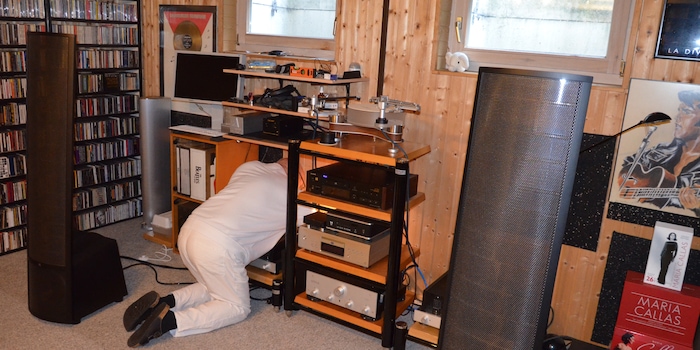
Cable course, part 3: Testing speaker cables yourself
Don't believe anyone when it comes to the influence of audio cables? Then there's only one thing to do: test it for yourself. Here are some tips on how to carry out such a test.
With our cable course, we have obviously entered into conflict-prone territory. As can be read in some of the comments on episode 2: "bollocks", "ridiculous", "religious article", "money thrown away", "it's all in your head" etc. This is despite the fact that I repeatedly pointed out the more important and effective work on room acoustics and presented several cable types without making any judgements. Even though I repeatedly insisted that there is no ideal solution and even though I warned against simplistic, absolute advertising slogans.
This is why I would like to reiterate my preliminary remark: I am of the opinion that sound improvements within a hi-fi system should start with optimised speaker placement and room acoustics before spending a lot of money on high-quality components and accessories. Only then is it worth thinking about cables, for example, which could replace the cheap accessory strips.
Then, however, there is no way around trying things out. This should also be emphasised once again: Make up your own mind, or better: get your own opinion.
Test it yourself - preferably at home
In episode 2, I presented several different types of speaker cables (flat ribbon, solid core, stranded, braided, parallel), which can have different effects in different combinations of (amplifier) power amplifiers and (speaker) crossovers.
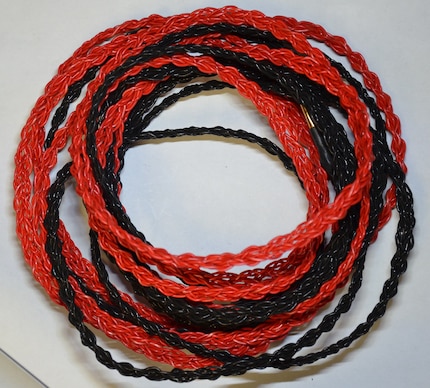
For this reason, if you want to invest a little more or even a lot of money in higher-quality connectors, you should definitely carry out your own listening test. Reputable dealers will allow you to do this on their premises, provided the time and materials involved remain reasonable. But: Of course this will only work in certain price ranges, of course a dealer also has a sales interest (after all, people have to make a living), of course your exact equipment may not be on site. Of course you have to be careful if the dealer advertises exactly one cable as the only one that will do the job. So if you are fundamentally suspicious of anyone who wants to sell you something, the only option is to check it at home, with your own system and your own music. But how do you go about it?
The choice of cables
Some of the commentators in the know, who can certainly look back on years of empirical research of their own, insist that the cheapest possible cable is (at least) as good as any "voodoo" cable. So the cheapest possible cable is an essential part of the test.
If the dealer where you bought your amplifier and/or speakers recommended a cable with a reasonable price, why not ask them to lend you one for a weekend? Or you may have become curious about a certain, possibly quite expensive cable that you can borrow because of a test in a specialist magazine. No, the editors who praise such cables are not all corrupt, I can put my hand in the fire for most of my (ex-)colleagues. But they may have carried out the test in a configuration that doesn't correspond to yours at all. So try, perhaps only in a second test, to get a cable with a different configuration.
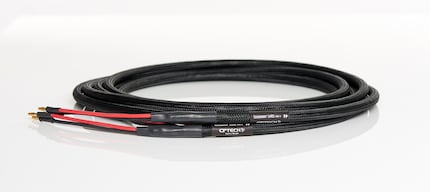
Why only in a second test? Because three test subjects are completely sufficient for - still - inexperienced listening testers. Cheap ribbon, cable recommended by the dealer, dream cable: that's enough for now.
Preparation and selection of music
First of all, you have set up your speakers as well as possible. You choose three or four favourite pieces of music that won't get on your nerves even after listening to them several times - this happens automatically in such a comparison. Fun fact number one: very few current, successful pop songs are suitable for such a listening comparison. They are usually overly compressed in the studio in terms of dynamics (technical term: compressed) and massively treated in terms of sound technology. Have you heard the term "pig box"? That's what studio professionals call monitoring speakers that they use to check their productions to see if they still sound "good" over the last WiFi squawk or car radio speaker. But we don't want to make a religion out of that either: If you only listen to your hi-fi system with Adele, Drake or Maroon 5, fine. It would be even nicer to make musical rules.
For those who don't feel patronised right away, audiophile tips from the hi-fi editorial teams, for example, are recommended. These can now often even be streamed in high digital resolution (HiRes) from the relevant services. The stereoplay or AUDIO magazines sometimes have so-called covermount CDs with good-sounding titles on their covers. You may also now have a record player (again). Of course, the source for each cable must always be the same for each track. You can of course change them during the test.
I recommend at least four different styles: "quiet" singer/songwriter music with characteristic voices; dynamic jazz, i.e. alternating between very quiet and loud, with a not-too-large line-up; symphonic music with lots of dynamics and spatial information; crisp rock with plenty of steam. In that order. But that's not a dogma either, the more important thing is that you like the music and enjoy listening to it.
Here are some examples from different genres that I can recommend.

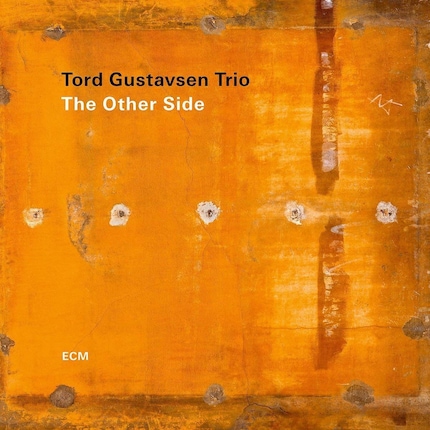




Position the amplifier and, if possible, the speakers so that you can always access the rear connections very quickly. Banana plugs (see Folge 2) are of course the most practical for quick plugging and unplugging, for cable lugs or loose ends you have to develop a quick screwing routine. Lay out the cables so that you can always switch quickly. Our sound memory is short, the examples should be played as quickly as possible one after the other.
And, fun fact number two: no alcohol before and during the test. The famous "little beer" or the even more famous "good glass of wine" are certainly conducive to enjoying music. But they dampen critical listening, which is essential for comparison. Unfortunately, this is a physiological reality. Therefore: save it for afterwards.
Step 3: Implementation
First do the check alone. The social component ("What, you can't hear anything?" or "No one can hear that!") should not be neglected. We can rule out the "new toy syndrome" mentioned by one commentator, as nothing has been bought yet. But if you want to be on the safe side here too, bring a "neutral assistant" into the parlour with you, who changes the cables with a meaningless poker face. By the way: The author has found that ladies usually hear better than men, who are usually actively involved in the hi-fi hobby. Not necessarily better in the sense of 'better able to describe with hi-fi vocabulary'. But better in the sense of being able to quickly judge "I like it better" or "I don't like it so much".
But that's just as an aside, of course we don't want to cause any relationship crises. But there's no harm in letting the lady of the house listen in from time to time.
If possible, set the volume to above room volume, but well below a steam hammer. Levels that are too loud quickly tire our hearing and our ability to distinguish between sounds.
As we are not comparing different speakers or amplifiers here, but rather cables, we are off the hook when it comes to one key criterion: the same listening volume. We always tend to perceive the louder component as the "better" one. If one of the speaker cables turns out to be "louder" than the others, it may have greater reserves, but it may turn out to be more annoying in the long run.
When listening and comparing, concentrate on a few details that you can understand: Are small differences in volume in the vocals easy to perceive or does the voice always sound the same volume? Can you hear a drum cymbal resonate well or does it sink into the "mud"? Does the person on the bass always pluck the strings with the same intensity? How well can you locate the first and second violins, the solo oboe, the harp or the trombones in a symphony orchestra? How much spatial information is transmitted? Does the reverb seem artificial or organic with the sound? Is there a jump in volume during the guitar solo? Does every snare drum hit sound the same? These were just examples, but a clear direction for the listening test can help.
Knowing and avoiding stumbling blocks
However, there are pitfalls along the way that you should avoid. Our brain, with its extremely powerful auditory centre, tends to perceive the current example as "better" than the previous one. Therefore, swap the order from time to time. If one cable emerges as the "best" in the test, please always listen to the others afterwards. A list of the criteria, each with a scale from double-minus (for significantly worse than the other cable), minus (about worse) to zero (just as good), plus (slightly better) to double-plus (significantly better) can help, but can also cause you unnecessary stress. If you can't hear a difference, you can't hear a difference. Full stop. That's not a flaw!
For me, one of the most important criteria when comparing is long-term suitability. Of course, this can only be determined to a limited extent during a check-up with short snippets. What appears positive as "more treble" on first listening can be a bit annoying in the long run. What is initially perceived as "pleasant homogeneity" can become boring in the long run. What is initially perceived as a "round" sound can lose brilliance and detail in the long run. Therefore: listen to longer passages, especially if an expensive candidate turns out to be your favourite.
If you're still not sure about your own judgement, you can also get your mates with the same hobby involved. This can be great fun, but please don't underestimate the power of suggestion. The author has experienced too many times how the mere announcement of a change in sound has made it "come true" in the audience. Even if the equipment was the same every time.
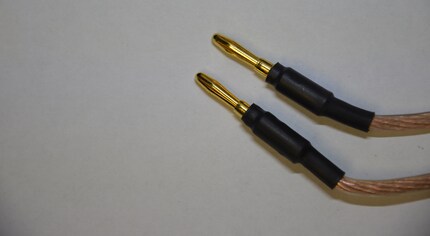
Conclusion
If the hearing test course ends with a clear result, then all is well. It's possible that the cheapest speakers were also completely convincing, or that the more expensive ones didn't sound any better. Then you saved money. However, it is possible that a less expensive cable gave you more pleasure and enjoyment than the others. Then you can buy "your" cable with a clear conscience. It doesn't matter whether others call it rubbish or conceited. Only your opinion, your own perception counts.
I have been a journalist in the audio industry for over 30 years. I have a reputation as an avid music lover, a die-hard analog fan and an uncompromising critic of speakers. This surely has something to do with my lamentable attempts to play violin and drums beyond amateur status. For a while I lived and worked in Switzerland, my favorite country, where I love to return.
Practical solutions for everyday problems with technology, household hacks and much more.
Show all